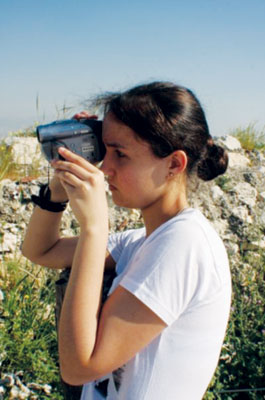All Nonfiction
- Bullying
- Books
- Academic
- Author Interviews
- Celebrity interviews
- College Articles
- College Essays
- Educator of the Year
- Heroes
- Interviews
- Memoir
- Personal Experience
- Sports
- Travel & Culture
All Opinions
- Bullying
- Current Events / Politics
- Discrimination
- Drugs / Alcohol / Smoking
- Entertainment / Celebrities
- Environment
- Love / Relationships
- Movies / Music / TV
- Pop Culture / Trends
- School / College
- Social Issues / Civics
- Spirituality / Religion
- Sports / Hobbies
All Hot Topics
- Bullying
- Community Service
- Environment
- Health
- Letters to the Editor
- Pride & Prejudice
- What Matters
- Back
Summer Guide
- Program Links
- Program Reviews
- Back
College Guide
- College Links
- College Reviews
- College Essays
- College Articles
- Back
The Last Picture Show
“The times are changing, and leaving Anarene, Texas behind.” If I worked on Peter Bogdanovich’s PR team for his debut 1971 film, The Last Picture Show, that’s the tagline I would pitch. This quiet, bittersweet hit, shot in stark black and white and set in 1951, tells the intertwining stories of inhabitants in a small Texas town, mostly centering around the relationships of high-school students Sonny (Tim Bottoms) and Duane (a young Jeff Bridges, pre-Dude). Old-fashioned Anarene leaves its residents with little to do but trade sexual partners and grope for emotional connections in the process, with the exception of social-minded queen bee Jacy (Cybill Shepherd) who breaks hearts with remarkable ease. Bogdanovich assembles a stunning cast of actors, composed of bright new talents just starting out (Bridges, Bottoms, Shepherd, with surprise guest Randy Quaid, brother of Dennis) and respected older actors: Ben Johnson as town patriarch Sam the Lion, Eileen Brennan in the part of weary waitress Genevieve, Ellen Burstyn playing Jacy’s harsh mother, and Cloris Leachman in a stand-out performance as Ruth Popper, the beleaguered wife of the high school football coach and Sonny’s occasional lover. The film was nominated for eight total Academy Awards, but Leachman and Johnson were the only nominees to win (still a pretty good track record!). There is no original soundtrack here because it’s a diagetic film, meaning all sound originates from the world of the movie. This serves to make Picture Show quiet and distant to the audience, an insulated world far away. So the film is scored instead with popular country songs of the 50s, playing softly from jukeboxes or radios in the background of every scene, accompanied by the swish of tumbleweeds blowing through Anarene. These songs act as the soundtrack of both the movie and the characters’ lives, lilting and quietly pulsing along with Sonny’s coming of age. Bogdanovich keeps his camera at eye-level throughout to create a sense of honest realism, no frills or fanciful touches. Other filmmakers of the time, in contrast, had begun experimenting, and it culminated in the cinematic movement sometimes known as The American New Wave. This time period in film is characterized by a new vibrancy in filmmaking that eschewed the old formal ways. For this picture, Bogdanovich held on to those older techniques that were slipping away. He went back to basics to tell this story, using black and white, linear storytelling, and straightforward camera work. The Last Picture Show, an exquisite tapestry of melancholic human lives in a fading town, was what Bogdanovich lived in a way. He made a simple, understated “old school” movie as the film world started to change. This beautiful movie serves as both an epitaph to an era and a landmark work of one of cinema’s finest times.

Similar Articles
JOIN THE DISCUSSION
This article has 0 comments.
